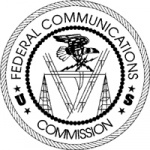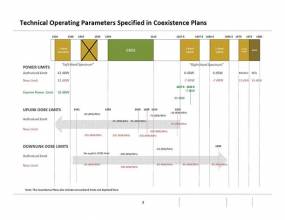
NovAtel Inc. has submitted comments to the Federal Communications Commission (FCC) regarding Ligado Networks LLC’s (formerly New LightSquared LLC) License Modification Applications in which the company raises deep concerns about the testing methodology used and conclusions presented by Ligado regarding the impact of their proposed usage of L-band frequencies for a terrestrial wireless network.
NovAtel Inc. has submitted comments to the Federal Communications Commission (FCC) regarding Ligado Networks LLC’s (formerly New LightSquared LLC) License Modification Applications in which the company raises deep concerns about the testing methodology used and conclusions presented by Ligado regarding the impact of their proposed usage of L-band frequencies for a terrestrial wireless network.
Conducted by telecommunications consultancy Roberson and Associates (RAA), the tests looked at 27 different GPS receivers serving the general navigation, high-precision, non-certified aviation and cellular markets.
In its filing yesterday (May 19, 2016), NovAtel identified what it called “serious flaws in the testing methodology” used to evaluate high precision receivers. Although high-precision receivers were used during the testing, the high-precision position modes that are used to achieve centimeter-level positioning accuracy required by many professional and safety-critical applications were not evaluated.
“The RAA Study did not test DGPS, RTK or PPP modes and only tested for autonomous position, even in the High Precision category of receivers tested,” NovAtel stated in its filing. “The RAA Study is also devoid of any carrier phase based positioning analysis.”
The study shows a lack of understanding of the uses of GPS by assuming that all applications require the same positioning accuracy, the company said in a press statement. “Different applications, such as survey and measurement will require much greater positioning accuracy,” wrote in its ex parte filing with the FCC.
NovAtel said the filing also raises a number of concerns about the potential harmful interference effects on GPS receiver performance. The company is particularly concerned that Ligado has moved away from what is understood to be an agreed-upon standard that interference tolerance should be limited to a received interference signal power level that causes no more than one-decibel degradation in the received signal-to-noise (C/N0) level.
NovAtel disagrees with the conclusion in the RAA Study that no meaningful correlation exists between a one-decibel change in C/N0 and GPS performance. The company asserted that any interference must not exceed one-decibel degradation in received C/N0 if robust, precise positioning is to be maintained. Ligado has not yet proven that its use of the spectrum will not be detrimental to high-precision GNSS users, which is what the one-decibel C/N0 degradation metric ensures.
To date, Ligado has not proven that its use of the proposed spectrum can be made compatible with high-precision GNSS, the company said. Moreover, the interference effects on other GNSS constellations such as Galileo, GLONASS, and BeiDou was not addressed in the study, NovAtel pointed out, constellations that are increasingly used in combination with GPS for many high-precision applications. Proposed, unverified mitigation methods such as narrowband antennas are presented in the Ligado filing without explanation of who will be responsible for the cost of such design modifications and retrofit programs.
NovAtel’s FCC filing can be viewed in its entirety on the FCC website. Comments on Ligado’s proposed license modification application can also be found here. Interested parties have until Monday (May 23, 2016) to file objections or other comments to the application.





